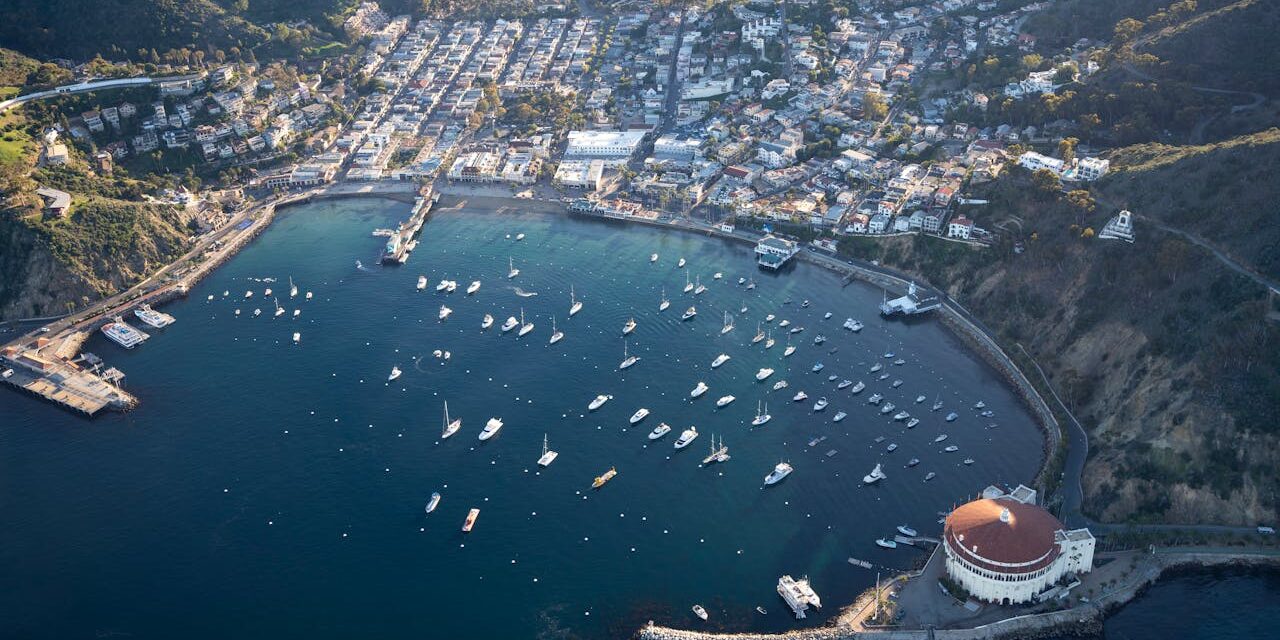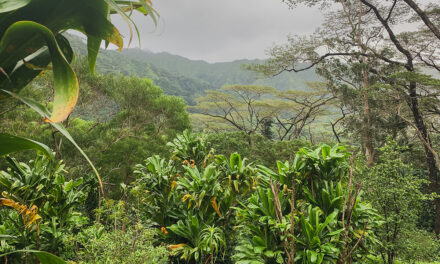Catalina Island has captivated my imagination ever since I first read about it in Island of the Blue Dolphins.
The island’s mystique deepened with tales of its sole city, Avalon, immortalized in a jazz standard, and the tragic lore surrounding Natalie Wood’s untimely death.
Although I’ve never set foot on its shores, I dream of one day zipping around its rugged terrain in a golf cart, exploring the rich background of its history.
Let’s embark on an exploration of Catalina Island, a gem of the Channel Islands, and unravel the history of its two cities.
Table of Contents
Pre-Colonial Times: The Island’s First Inhabitants
Long before it became a retreat for the Hollywood elite, Catalina Island was home to the Tongva people, who called it Pimu.
They thrived on its abundant resources, fishing in its kelp-rich waters and traversing its hilly landscapes.
European Discovery and Mission Era
The island came into the European lens when Spanish explorer Juan Rodríguez Cabrillo spotted it in 1542.
However, it wasn’t until the late 18th century that it was drawn into the mission-building efforts that reshaped California.
Mining and Ranching: Catalina’s Early Industries
Throughout the 19th century, Catalina saw a flurry of activity, from mining to ranching.
Prospects of mineral wealth brought ambitious entrepreneurs, while its vast grasslands became pastures for sheep and cattle.
The Birth of a Resort Destination
The 20th century transformed Catalina.
Entrepreneur William Wrigley Jr. saw the island’s potential and invested in its development, notably in Avalon, which became a resort town attracting tourists seeking its Mediterranean-like climate and seaside glamour.
Hollywood’s Seaside Escape
Catalina’s proximity to Los Angeles made it a natural getaway for Hollywood stars.
Its Casino Ballroom echoed with big-band tunes, and its waters hosted stars’ yachts. Yet, it also holds a darker Hollywood connection with the mysterious death of actress Natalie Wood in 1981.
The Wartime Island
During World War II, Catalina served a strategic role.
The island was closed to tourists and swiftly transformed into a training ground for the U.S. military, a chapter that added to its layered past.
Conservation Efforts: Preserving Natural Beauty
Post-war, conservation became a focal point.
The establishment of the Catalina Island Conservancy in 1972 ensured that much of the island remains wild and pristine, a sanctuary for endemic species and natural habitats.
Catalina Today: Tourism and Tradition
Nowadays, Catalina is a vibrant blend of its heritage and tourist-driven economy.
From the charming streets of Avalon to the quietude of Two Harbors, the island embraces its history while catering to visitors from around the globe.
Q&A: Diving Deeper into Catalina’s Story
Q: What are some of the lesser-known facts about Catalina’s history?
A: Catalina has a rich archaeological past, with numerous sites indicating the advanced nature of the Tongva. Also, during the 1920s, it hosted a spring training camp for the Chicago Cubs baseball team, owned by Wrigley.
Q: How did the Wrigley family influence the development of Catalina?
A: William Wrigley Jr.’s vision and investment turned Catalina into a premier vacation spot. His legacy includes the iconic Casino building and the nurturing of Avalon into a picturesque town.
Q: Can you tell me about the natural wildlife and conservation on Catalina Island?
A: The Catalina Island Conservancy protects 88% of the island, ensuring the preservation of its unique ecosystems. It’s home to species like the Catalina Island fox and a variety of endemic plants.
Q: What’s the significance of Catalina’s ‘two cities’?
A: Avalon and Two Harbors, the only incorporated city and the smaller village on the island, respectively, represent Catalina’s dual nature: Avalon’s bustling tourism and Two Harbors’ serene escape.
Catalina’s Allure Stands the Test of Time
Catalina Island, with its rich history and preserved natural beauty, continues to beckon with the promise of adventure and tranquility. It’s a place where one can trace the footsteps of indigenous peoples, early European settlers, and Hollywood legends alike.
The island beckons with its tales of the past and present, promising an experience steeped in history and natural wonder.
So, while I’ve yet to traverse its landscapes or lose myself in the quiet of Two Harbors, the dream of Catalina remains—a call to someday explore its rugged beauty and storied shores.





